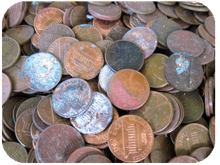 In today’s modern economy, statistics are supreme. GDP, unemployment and interest rates all play dominant roles in the allocation of the government’s budget. No spending bill can hope to pass into law without a battery of statistics and figures charting how such legislation will benefit the country. But just how accurately do those numbers reflect the world we live in?
In today’s modern economy, statistics are supreme. GDP, unemployment and interest rates all play dominant roles in the allocation of the government’s budget. No spending bill can hope to pass into law without a battery of statistics and figures charting how such legislation will benefit the country. But just how accurately do those numbers reflect the world we live in?
Take GDP, for instance. The famous figure has only been reliably collected in the U.S. since the 1930s and didn’t Continue reading


